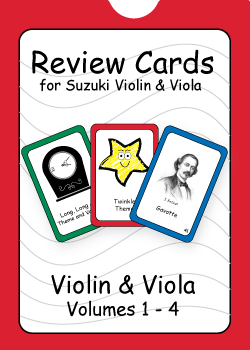The start of the new school year has brought a new level of motivation for me and my kids. I've been thinking of making this practice book for a long time for my students, but I didn't know how well it would get used. So, I decided to make one for my own daughter and see if we liked it. If it's successful I may pass it on to my students.
First of all, I made the cover using one of my photos with her and her violin. This is a cute one from her solo recital last year.

Right at the front of the book, I put the calendar for the whole year through next August. I'm going to use this calendar to put her violin dates (since my calendar is full of our family's activities) so she can see for herself when she has lessons and group lessons. As a kindergartener this year she will be learning a lot about calendars. We will also put a sticker on each day that she practices so she'll have a visual of how much she practices

The bulk of the practice book is the 52 blank practice guides. I have lots of different practice guides, but since I'm sure she'll be in Book 2 before next August I wanted to ensure that this book would last all year.

One of our goals this year is to play every song in Book 1 100 times. This should be a pretty easy goal considering that we play every piece at least every other day. But it sounds like a lot and I'll come up with some sort of reward when we're finished. What I used here was a Book 1 review chart with 25 boxes and I copied it 4 times.

After the Book 1 review chart are a variety of other charts just for fun in case we want to use them. This is one reason I was debating whether or not to bind this or put it in a 3 ring binder. I know that we will want to use other charts throughout the year. But I liked the idea of a spiral-bound book because it will all stay together and it will be easy to fold back so it'll fit on my lap or my stand easier.

And the very last page is a picture that I let my daughter draw so she feels like this is HER book instead of my book. She loves looking at it!

Overall, laminating the front and the back and spiral binding it (I made the copies on my home copier so I'm not counting that cost) cost me $4.50 at Alphagraphics. I hope this will motivate us to practice all year long!



